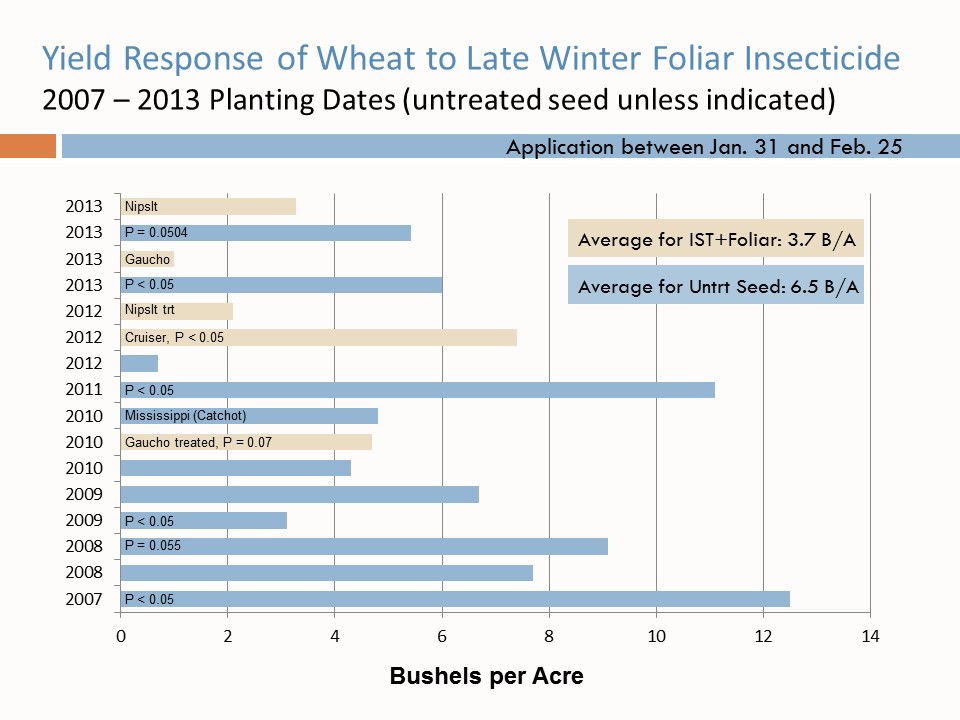The following is an updated version of an older article … The next 4-5 weeks is the time to consider making a foliar application for aphids in wheat. I’ve discussed the potential value of managing aphids to prevent the spread of barley yellow dwarf virus (BYDV) in a previous article. A late-winter, foliar insecticide application, at least on wheat not having an insecticide seed treatment, has shown a consistent yield benefit in my testing over the last five years (figure below).
I do not think the timing of this application is especially critical, BUT it must be made before aphids have become well established in the field. Otherwise, you’ve missed the opportunity to prevent the transmission of BYDV. You are likely too late if aphid populations already exceed 6-8 aphids per foot of row. Insecticides recommended for the control of aphids in wheat are listed in UT’s insect control recommendations for wheat.



Is Dimethoate applied in streamed on UAN (for the first N application in a split-N system)as effective as a broadcast sprayed synthetic pyrethroid?
Great question and something we are preparing to test. The short answer is I don’t know. The long answer is, in my testing, Dimethoate does well at controlling aphids. Being systemic, it makes sense that you could get away with less that ideal coverage that you might expect from a fertilizer streamer. I’ve visited with a consultant friend with some good experience, and even with a pyrethroid, he has seen some reasonable control when steaming insecticide with fertilizer. That gives me optimism with Dimethoate. Using streamer nozzles with multiple openings and cranking up the pressure should improve control, and you are less concerned with burn on small wheat. I am a little concerned that Dimethoate may heat up any fertilizer burn, but my guess is this would be cosmetic injury.
Do a jar test to make sure you won’t have a compatibility problem. I wouldn’t go hog wild, until we get some more experience, but it is worth a try. The test I have in mind will look at fan vs. streamer nozzles at a couple of different pressures. It will include Dimethoate and a pyrethroid.
Actually, I’ve been using Dimethoate this way for years when it allowed me to skip an extra trip across the field. I never ran into a problem with compatibility with 32% UAN or with leaf burn, but that’s not to say it couldn’t happen. Two things I never really knew were: 1) Is the control really as good as a broadcast pyrethroid? and 2) How early does the insecticide really need to be out there? Is the time for N application really too late?
Looking forward to seeing what you find out.
Good information. The efficacy part is the question I hope to answer, and I suspect it is a matter of how much coverage you are getting … pretty much determined by nozzle type and pressure. My guess is the Dimethoate, being systemic, will help. Timing wise, I think you are right in the sweet spot. My experience is that, for wheat planted at the normal time, that aphid populations are very low going into winter. And if you take them out prior to March, they don’t bounce back quickly. I’ve had good success doing this in February, but think anytime from December – February would have a similar effect. This goes a long way to delay the spread of virus. I think you have a pretty wide window that ends before the wheat and aphid populations begin to grow.
Now on early planted wheat, aphids population may be higher in the fall and may have already transmitted the virus.